This section details normal neutrophil maturation phenotypes. Knowledge of normal phenotypes is important in identifying cell populations and recognising phenotypic aberrancy.
Normal Granulocytic Phenotypes
- Myeloblasts: intermediate SSc, variable FSC, CD4+, CD10−, CD11b−, CD11c+/–, CD13+, CD33++, CD34+, CD38+, CD117+, HLA-DR+, CD123+/–
- Promyelocytes: high SSc, high FSC, CD4+(dim), CD11b−, CD11c−, CD13+, CD15−, CD16−, CD33++, CD34−/+, CD38+, CD64+(dim)/–, CD117+, HLA-DR−
- Myelocytes: high SSc, high FSC, CD4+/–, CD11b−/+, CD11c−/+, CD10−, CD16−, CD33+, CD34−, CD38+, CD117−, HLA–DR−
- Metamyelocytes: high SSc, high FSC, CD4−, CD10−/+, CD11b+/–, CD11c+/–, CD16−/+, CD4−, CD13+, CD33+, CD34−, CD117−, HLA-DR−
- Neutrophils: high SSc, high FSC, CD4−, CD10+, CD11b+, CD11c+, CD13++, CD15++, CD16+, CD33+, CD34−, CD38+, CD117−, HLA-DR−
- Eosinophils: very high SSC, very low FSC, CD4−, CD10−, CD11b+, CD11c+, CD13+, CD15+, CD16−, CD33+, CD34−, CD38+, CD117−, HLA-DR−
- Basophils: low SSC, moderate FSC, CD9+, CD13+, CD22+, CD25+, CD33+, CD36+, CD38++, CD45++, CD123+, CD34−, CD64−, CD117−, HLA-DR−
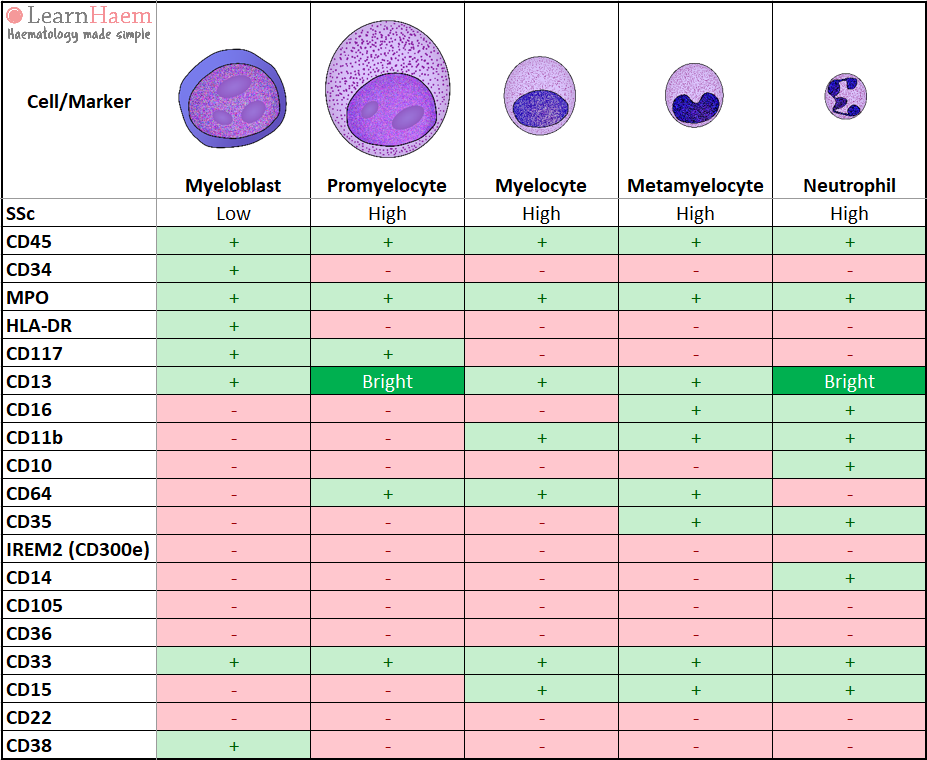
Maturation Pathways
Side Scatter and CD45
As myeloblasts mature into promyelocytes, the cytoplasm becomes more granular, causing the side scatter to increase. Mature myeloid cells are generally brighter for CD45 than promyelocytes.
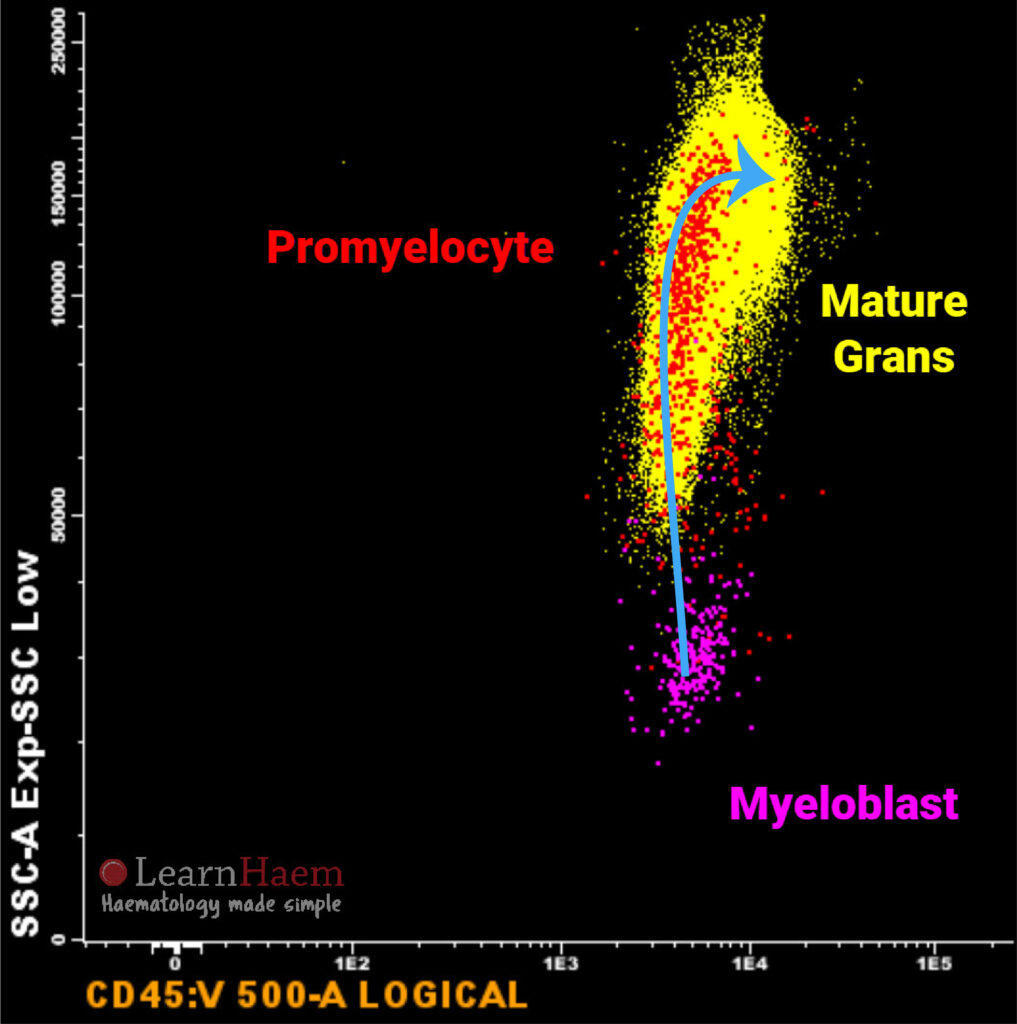
Side Scatter and CD34
As myeloblasts mature into promyelocytes, they lose CD34. Promyelocytes have many cytoplasmic granules, and hence have a high side scatter.

CD117 and HLA-DR
Normal myeloblasts are CD117+/HLA-DR+. As they mature into promyelocytes, they lose HLA-DR, but retain CD117. Myelocytes, metamyelocytes and neutrophils are negative for both HLA-DR and CD117.

CD13 and CD11b
Normal myeloblasts have heterogenous expression for CD13 (they become progressively more positive for CD13 until they reach the promyelocyte stage). Promyelocytes are CD13+; as they mature into myelocytes and metamyelocytes, CD13 expression reduces, before increasing again. Neutrophils are positive for CD13.
Blasts and promyelocytes are negative for CD11b. Expression of CD11b increases as cells mature into myelocytes, becoming positive in neutrophils, band forms and metamyelocytes.
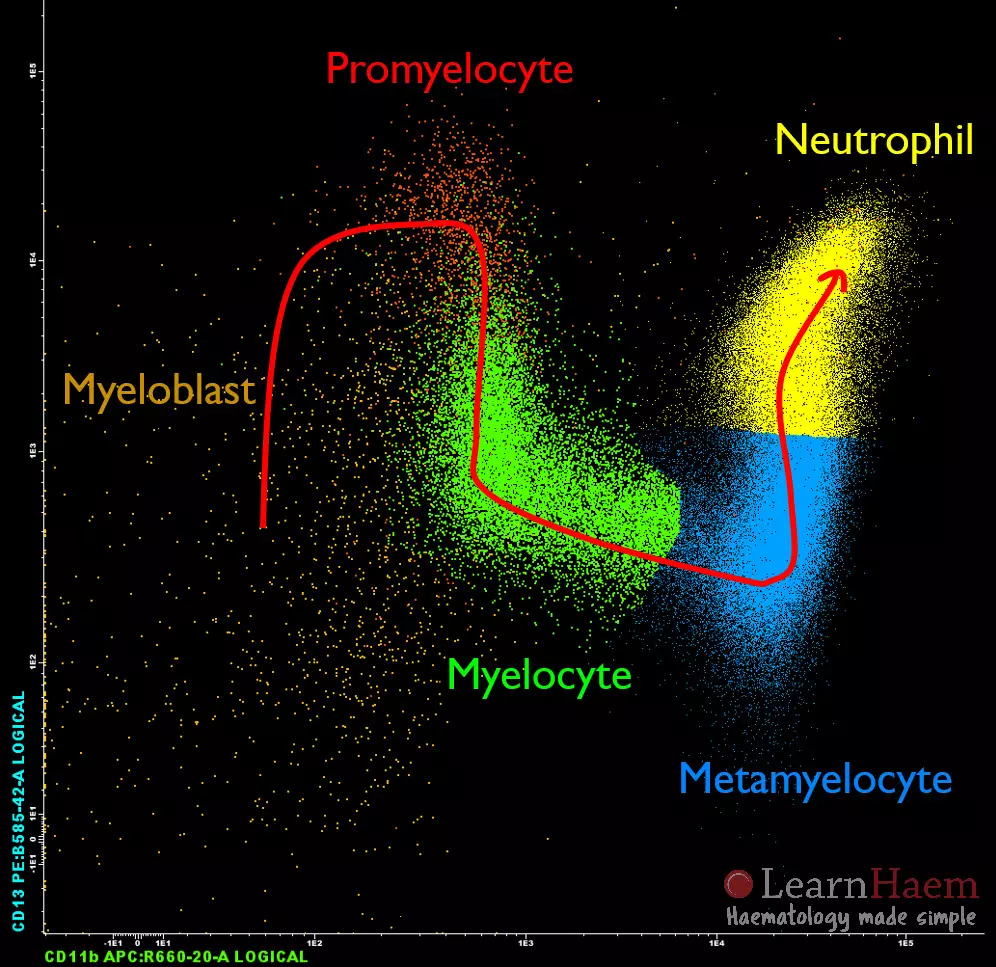
CD13 and CD16
Maturation along CD13/16 resembles a tick.
Normal myeloblasts have heterogenous expression for CD13. Promyelocytes are CD13+; as they mature into myelocytes and metamyelocytes, CD13 expression reduces, before increasing again. Neutrophils are positive for CD13.
Myeloblasts, promyelocytes and myelocytes are CD16 negative. CD16 expression on metamyelocytes increases as they mature, becoming positive in neutrophils.
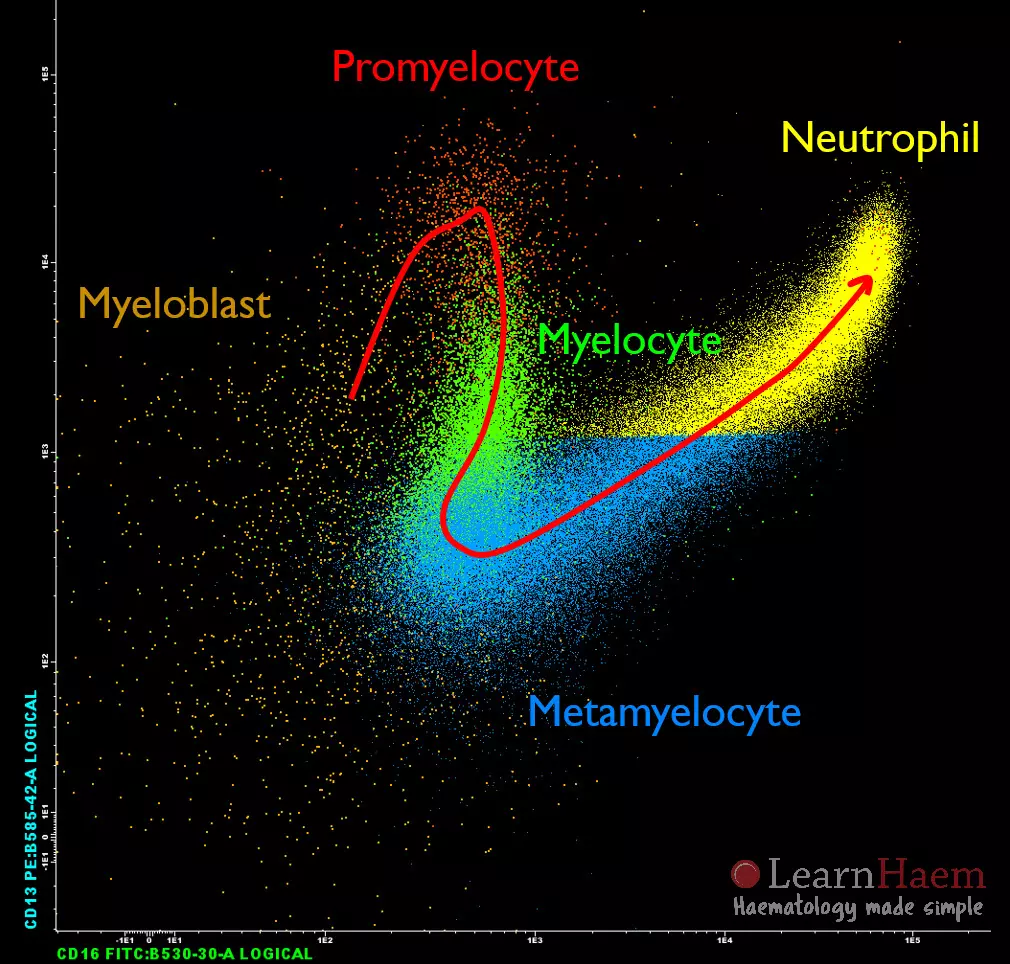
CD16 and CD10
Myeloblasts, promyelocytes and myelocytes are negative for CD10. CD16 expression on metamyelocytes increases as they mature, although CD10 remains negative. Neutrophils are positive for both CD10 and CD16.
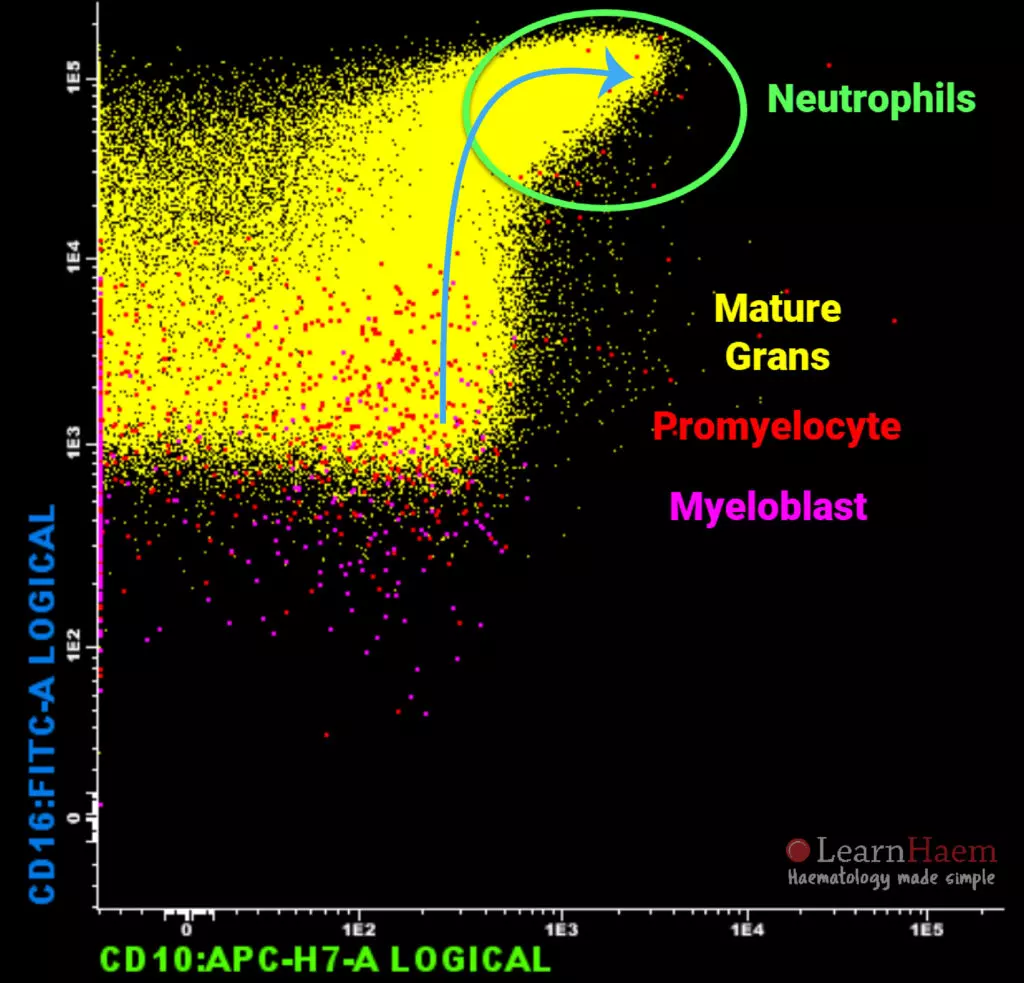

Leave A Comment